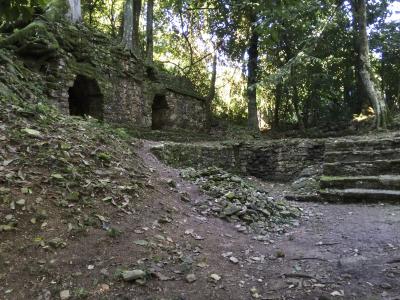With Stahl funding, multi-sited collaborative research in the greater Palenque region in Chiapas, Mexico, continued. This grant supported the first season of excavations in a ritual structure at Palenque by Lisa Johnson.
In this dissertation, I consider a theoretically driven methodological approach to the study of ritual in archaeology. Inspired by a renewed materialist perspective, the project employs a comprehensive series of methodologies in a study of ancient Maya ritual. Through excavations of two funerary shrines of an elite residence in the city of Palenque, it considers each discrete context not as a “ritual deposit” but as an ‘event.’ Each ‘event’ was comprehensively sampled in order to recover the residues and traces of past actions, and of the various materials brought together in a moment of heightened relationality. The inclusion of multiple macroscale and microscale archaeological methods together not only identifies residues of materials previously undetected, but also employs a microhistorical approach. Micromorphology of ‘events’ shrinks the time frame of analyses and presents archaeological stratigraphy as lived, generational, time. Paleoethnobotanical, zooarchaeological and micromorphological analyses combined with a single context excavation strategy resulted in the recovery and identification of periodic ritual events carried out in honor of the dead. The ancient residence under consideration, known as “Group IV,” was materially rich and politically well connected. The leading members of the house were recorded in texts in the residential group as well as in the main palace, thus providing additional lines of evidence to pull from in order to explore the ritual life of the generations of Maya that lived, died, and were buried in what is suspected to be a founding residence. This work not only provides a general framework for archaeological approaches to the study of ritual in the past, but also provides important information for Maya studies in particular. Few studies in the Maya area have been fortunate enough to have a residence with the names of its occupants, as well as accompanying well-dated, fine-grained stratigraphic resolution that coincides with occupation of the residence within the span of a human lifetime.






